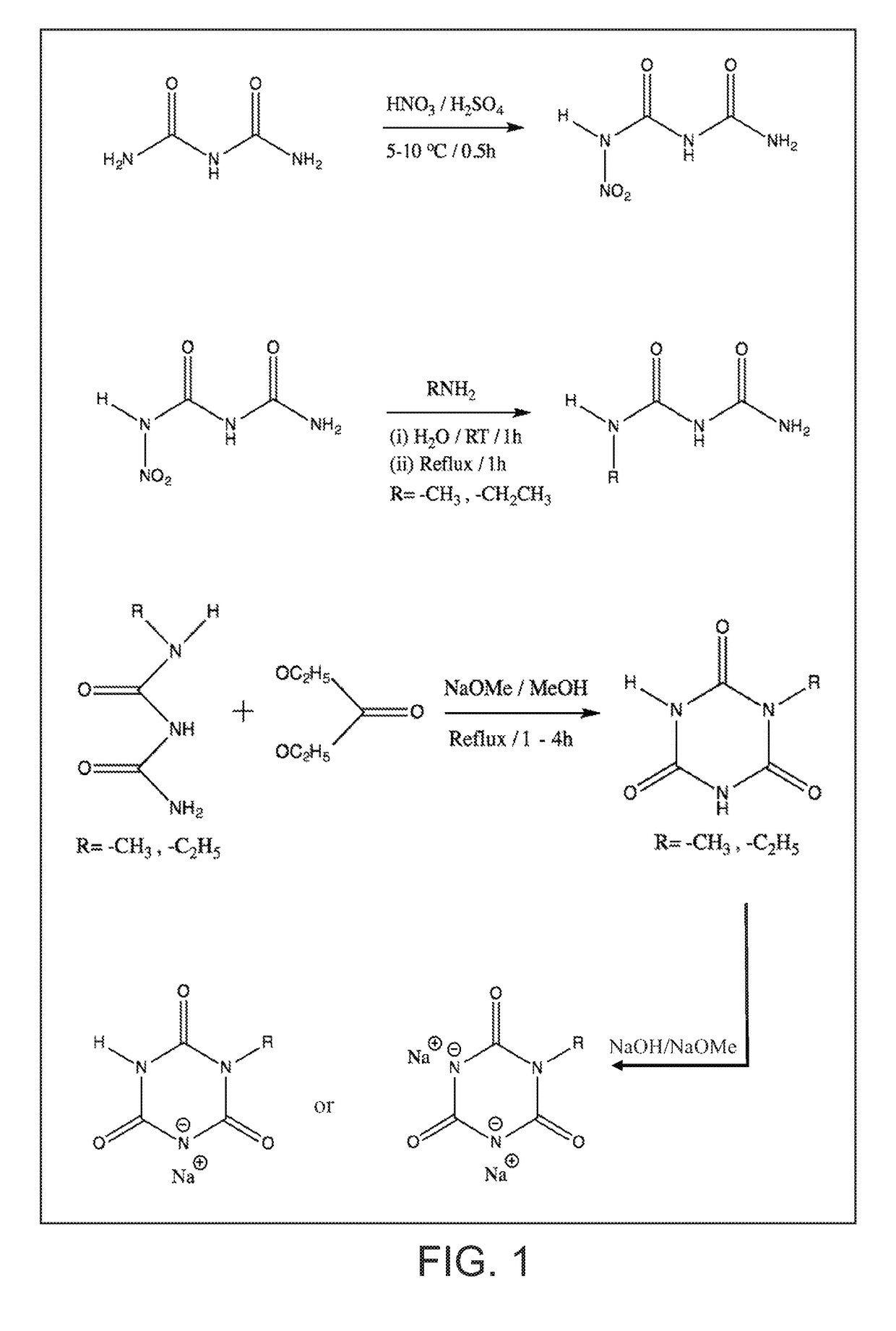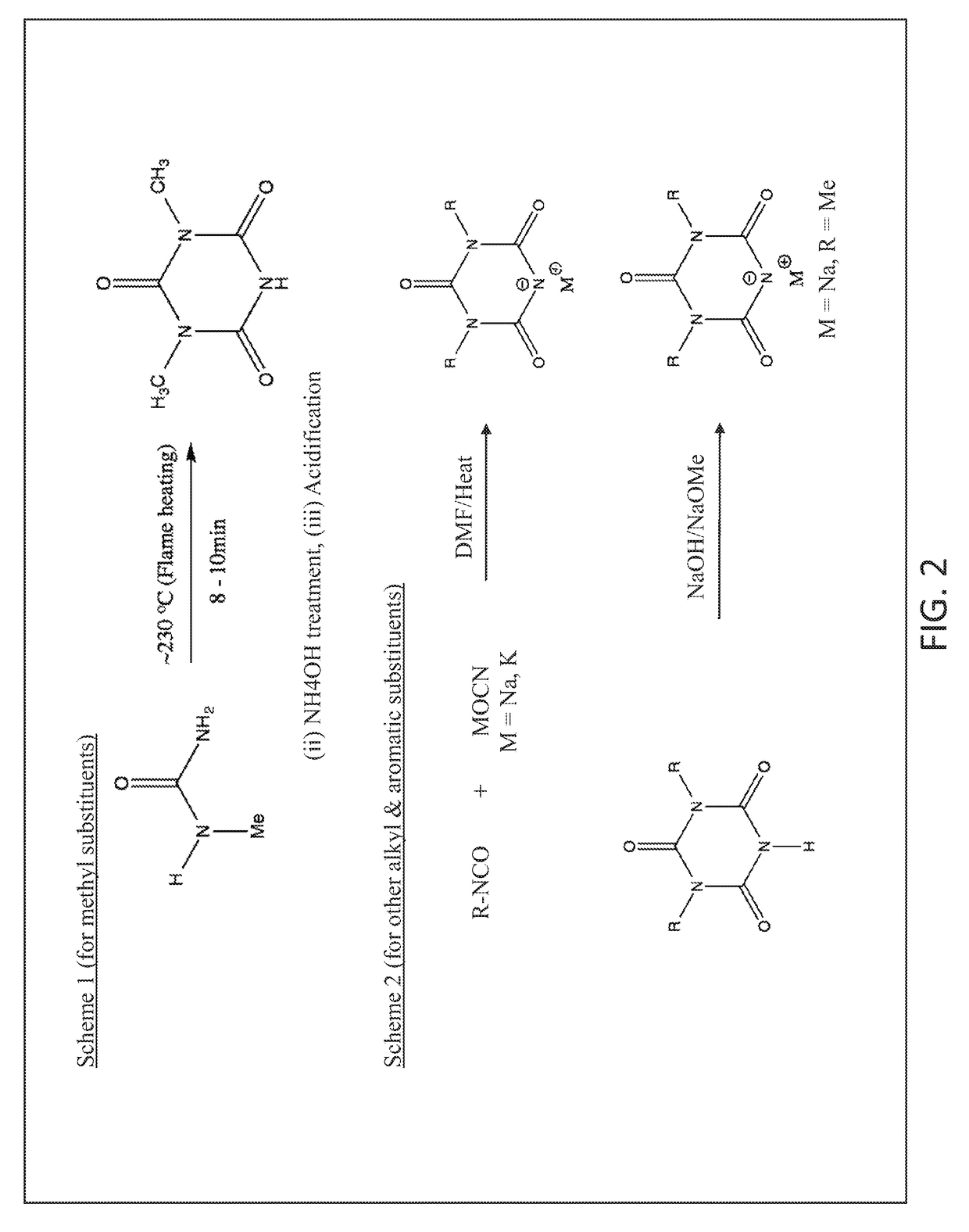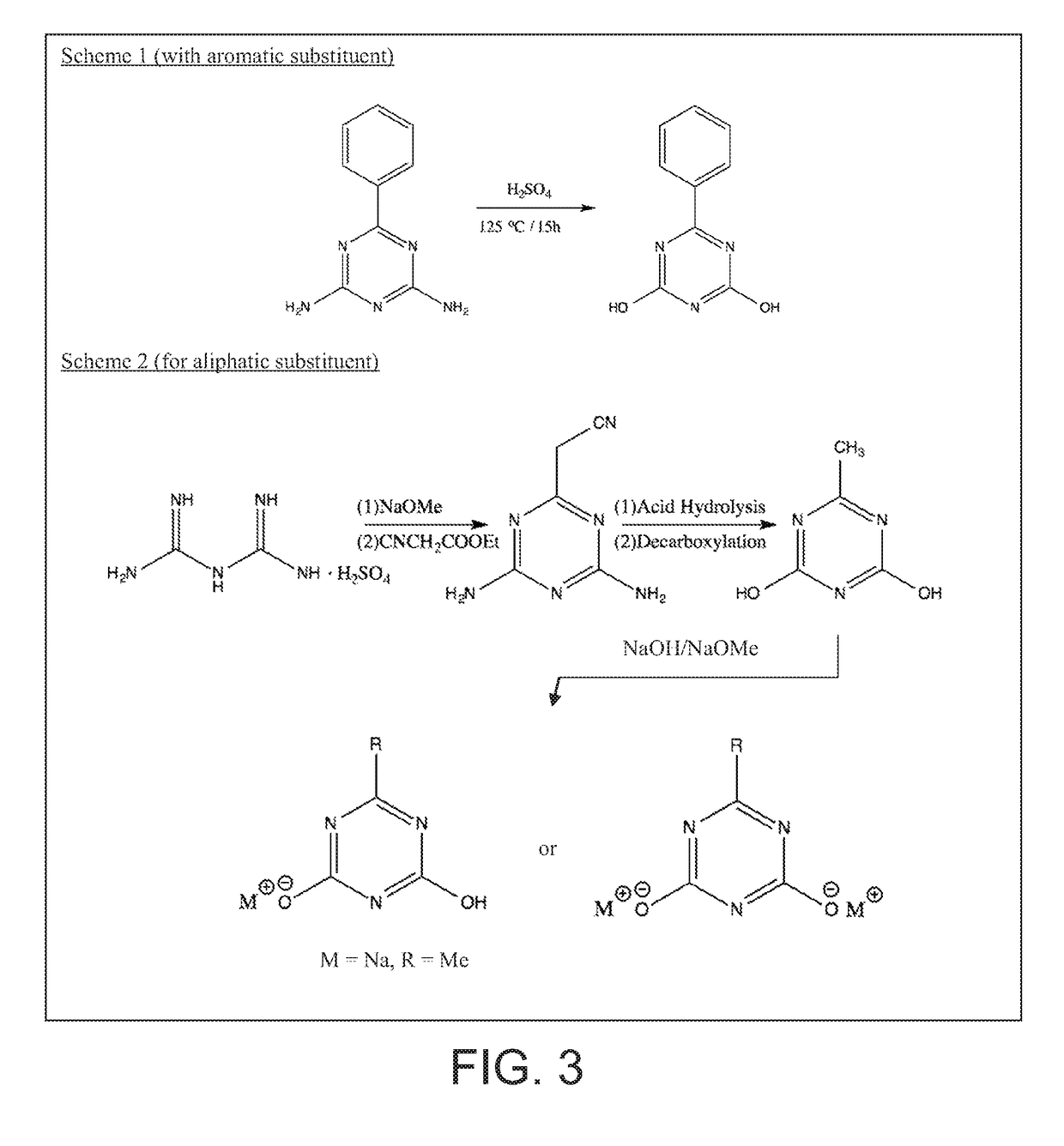Antimicrobial compounds, methods of making the same and articles comprising them
a technology of antimicrobial compounds and compounds, applied in the field of antimicrobial compounds, can solve the problems of difficult manufacturing of products containing silver compounds, silver compounds tend to degrade with time, and commercial antimicrobial products that include silver have failed to materialize, etc., to achieve the effect of resisting discoloration, easy to synthesize, and easy replacemen
- Summary
- Abstract
- Description
- Claims
- Application Information
AI Technical Summary
Benefits of technology
Problems solved by technology
Method used
Image
Examples
example 1
on of 1-Nitro Biuret
[0074]To a 100 ml glass beaker with a magnetic stir bar, weighed quantities of concentrated sulfuric acid (20 g) and 70% nitric acid (5.0 g) were added in that order. The beaker was placed in glass trough filled with enough ice water mixture (5-10° C.) so that glass beaker would not float or tip. Biuret powder (4.12 g, FW103) was slowly added to the stirred acid mixture over several minutes. The powder went into solution to yield a clear solution that was stirred for 30 minutes. Using a plastic disposable pipet the acidic solution was dripped over crushed ice (˜200 g) in another glass beaker. After all of the acidic mixture was added, the ice melted to yield a white suspension. After filtering the suspension, the resulting white solids collected were washed with ice water (˜10° C., 200 ml). The filter paper with solids was dried in oven at 55° C. for ˜2 h to recover cake of white solids (˜3.75 g, Yield 64%). Recrystallization from 50 / 50 mixture of ethanol / water y...
example 2
on of 1-Methyl Biuret
[0076]To a 100 ml flat bottom round flask with stir bar, 1-nitro biuret (8.74 g, 60 mmol) and deionized water (30 ml) were added. Under stirring, aqueous methyl amine solution (40% concentrate with ˜12 mol / liter, 5.55 ml, 60 mmol) were added to the flask. Upon adding methyl amine solution, the suspension of 1-nitro biuret became more smooth thick paste like. The resulting solution was stirred at ambient for an hour followed by heating and reflux for an hour. About 15 minutes into reflux, the thick paste like suspension turned clear and remained that way during the rest of reflux. After reflux, the hot solution was quickly transferred to a crystallizing dish that was kept in oven at 45° C. to concentrate. After 1 to 1.5 h in the oven, crystals began to form in the crystallizing dish. At this point, the dish was moved to cool to room temperature. The dish was covered with plastic film and transferred to refrigerator to form more crystals overnight. With the help o...
example 3
on of 1-Ethyl Biuret
[0077]To a 100 ml flat bottom round flask with stir bar, 1-nitro biuret (2.96 g, 20 mmol) and deionized water (30 ml) were added. Under stirring, aqueous ethyl amine solution (70% concentrate, 1.67 ml, 20 mmol) were added to the flask. Upon adding ethyl amine solution, the suspension of 1-nitro biuret in water immediately turned to pale yellow brown colored clear solution. The resulting solution was stirred at ambient for an hour followed by heating and reflux for a total of 40 minutes. The solution was cooled to room temperature and then transferred to a crystallizing dish. When the liquid in the dish concentrated to ˜5 ml, crystals began to form. The dish was left in the hood overnight. The solids in the dish were wetted with ethyl acetate-methanol mixture (10 ml / 1 ml); the resulting mixture was filtered to recover solids that were dried at 45° C. for 15 minutes. More solids were recovered from the filtrate as well. The total amount of solids crystals (cream co...
PUM
| Property | Measurement | Unit |
|---|---|---|
| solubility | aaaaa | aaaaa |
| solubility | aaaaa | aaaaa |
| solubility | aaaaa | aaaaa |
Abstract
Description
Claims
Application Information
 Login to View More
Login to View More - R&D
- Intellectual Property
- Life Sciences
- Materials
- Tech Scout
- Unparalleled Data Quality
- Higher Quality Content
- 60% Fewer Hallucinations
Browse by: Latest US Patents, China's latest patents, Technical Efficacy Thesaurus, Application Domain, Technology Topic, Popular Technical Reports.
© 2025 PatSnap. All rights reserved.Legal|Privacy policy|Modern Slavery Act Transparency Statement|Sitemap|About US| Contact US: help@patsnap.com



